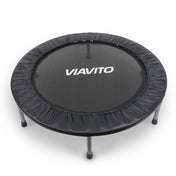Tennis players spend a lot of time finding the ideal racket, but few tend to spend any time at all finding the right tennis balls for themselves. It’s important to have the right tennis ball to suit you as it can make a huge difference to your playing ability.
There are lots of different types of tennis balls out there, mainly pressurised and non-pressurised. But for adults, you have practice tennis balls, championship tennis balls, and professional tennis balls. For beginners and children, you have stage tennis balls (stage 1, 2, 3).
Then there are tennis balls that are suited to different surfaces and environments. Regular duty, extra duty, high altitude, grass court. These are usually distinguished by the type of felt that surrounds the ball.
You can also get different speeds of tennis balls: slow, medium, and fast. Finally, there are pressurised balls and pressure-less balls. You can get different combinations, such as:
- regular duty, fast, pressurized
- grass court, medium, pressure-less
- grass court, fast, pressurized
Let’s take a closer look.
Types of Tennis Balls
Stage 3 Tennis Balls
These tennis balls have no pressure in them at all and because of this, these tennis balls bounce very slowly, making them perfect for beginners and children, who have poorer coordination. The balls have a red stripe on them.
Stage 2 Tennis Balls
These are a step up from stage 3 balls and have slightly more pressure. This means that they travel faster, bounce more, and are generally harder to hit. Though still significantly easier to hit than a normal tennis ball. They have an orange stripe on them.
Stage 1 Tennis Balls
These tennis balls are yellow and are almost pressurised to the level of an adult’s tennis ball. However, stage 3 tennis balls don’t have pressure from internal air, and they don’t get pressure from the rubber used to make the ball, so they have almost no pressure whatsoever. These tennis balls are perfect for children who are almost ready to play with proper tennis balls.
Pressurised Balls
A pressurised tennis ball has internal air pressure that keeps it highly bouncy. When you first open a can of pressurized tennis balls, they will immediately start to lose pressure as internal air slowly seeps out of the rubber walls of the ball.
Pressurised tennis balls can become fairly useless after just one match or about a week, and this can end up being quite expensive, as tennis balls need to be continually bought and replaced. However, these balls guarantee a good all-around performance and can supply a consistent bounce.
Things to Consider
Below is a list of things to consider when purchasing tennis balls. This may help you to find the perfect tennis ball for your specific needs:
Colour
For all adults, only yellow balls are required. This colour is easiest to see when it is being hit by a racket, which is why it is used in all formats. For children, the stage 3 and 2 tennis balls have a red and orange stripe respectively to denote their pressure and difficulty level.
Mass
Tennis balls must have a mass between 56g and 59.4g (1.98-2.10 ounces). Tennis balls that are bigger or smaller than this will not be allowed for tournament play.
Pressure
You can choose pressurized or non-pressurized tennis balls. If you are a beginner, you can use stage 3, 2,1 tennis balls that have had much lower pressure levels to make the ball slower and easier to hit.
Size
Tennis balls must have a diameter of between 6.54 and 6.86cm (2.57 and 2.7 inches) to be eligible for play in clubs or tournaments. Children are sometimes given oversized tennis balls as they are easier to see and hit
Rebound Height
Tennis balls lose pressure over time, and the best way of checking this is to see how well they rebound after being dropped. High altitude tennis balls are designed to bounce lower at sea level, and practice balls will also have a lower rebound height.
Your Budget
Professional tennis balls are seen to be the absolute best, but they can cost a lot. Non-pressurised tennis balls are a smarter investment for playing with your friends but are rarely acceptable for tournaments.
Tennis Ball Maintenance
The main thing you need to do is to avoid opening the can of tennis balls until you are about to start the match. That way the balls will be as “fresh” as possible. Once that air has started to leak out though there is nothing you can do to prevent it.

